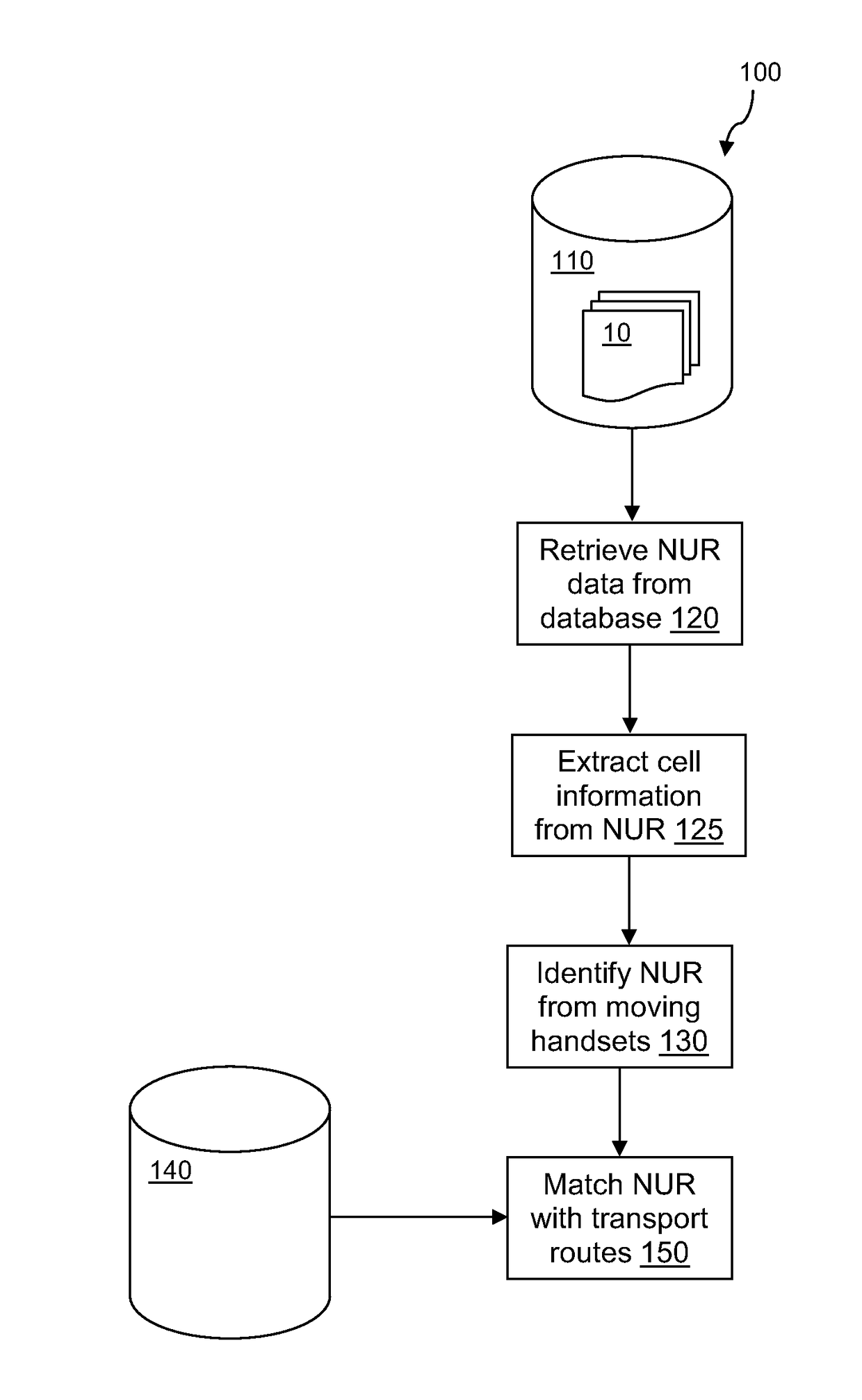Monitoring transport systems network traffic using mobile communications network usage records
a technology of transport system and usage record, applied in the direction of location information based service, wireless commuication service, instruments, etc., can solve the problems of ineffective determination, lack of accuracy, and high cost of setting up techniques, so as to reduce transit time and congestion, increase network capacity and efficiency, and increase transport capacity
- Summary
- Abstract
- Description
- Claims
- Application Information
AI Technical Summary
Benefits of technology
Problems solved by technology
Method used
Image
Examples
Embodiment Construction
[0033]FIG. 1 shows an example file structure of a network usage records (NUR) 10 indicating some of the data fields that may be present in such a record. Other data fields may be present or the data fields may have different names or structure. The call reference 20 provides an identifier for the NUR record. The calling party 30 is an identifier for the mobile device and may be the device's or SIM's telephone number, for example. The receiving party field 32 indicates the destination of the call. The calling party first location 35 contains two subfields 37 and 39 indicating the location ID and cell ID specifying details of where the call is initiated. Similarly, the calling party last location 40 contains two subfields 42 and 44 specifying the location ID and cell ID where the call was terminated. Where the calling party is moving between cells during a call the first location and last location may be different. The set up start time 45 contains subfields date 47 and time 49. Charg...
PUM
 Login to View More
Login to View More Abstract
Description
Claims
Application Information
 Login to View More
Login to View More - R&D
- Intellectual Property
- Life Sciences
- Materials
- Tech Scout
- Unparalleled Data Quality
- Higher Quality Content
- 60% Fewer Hallucinations
Browse by: Latest US Patents, China's latest patents, Technical Efficacy Thesaurus, Application Domain, Technology Topic, Popular Technical Reports.
© 2025 PatSnap. All rights reserved.Legal|Privacy policy|Modern Slavery Act Transparency Statement|Sitemap|About US| Contact US: help@patsnap.com



